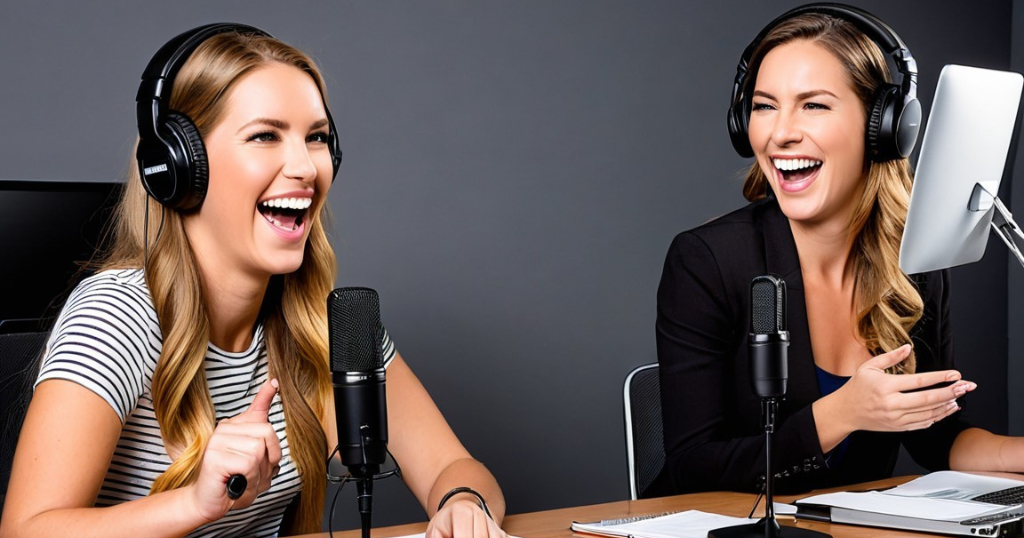How Podcast Platforms Have Grown into Fertile Ground for Advertisers

Listening to David Spade and Dana Carvey’s Fly on the Wall Apple podcast during my Atlanta commute is a daily ritual that transforms the grind of traffic into an hour of laughter. Beyond just the humor, what makes this podcast stand out is how seamlessly Spade and Carvey integrate sponsor messages into their conversations. They’ve mastered the art of turning advertisements into an engaging part of the show, blending humor with promotional content in a way that keeps listeners entertained while still delivering value for advertisers. This approach is a perfect example of how podcasts are revolutionizing the way brands connect with audiences.
The significance of podcasts in today’s media landscape was a major focus at Podcast Movement 2024 in August. According to the Spring 2024 Podcast Download Report by Cumulus Media and Signal Hill Insights, YouTube has emerged as the top platform for podcasts, with 31% citing it as their most-used network. Spotify follows at 21%, and Apple comes in third at 12%.
For a look at some basic sponsorship ad rates, Influencer Marketing Hub‘s article is a good start.
YouTube
YouTube, traditionally known for video content, has increasingly become a go-to destination for podcast listeners. The platform’s vast global reach—boasting over 2.49 billion users (https://backlinko.com/youtube-users) —makes it an attractive option for podcast creators looking to tap into a broad audience. YouTube’s demographic skews younger, with a significant portion of its users falling within the 18-34 age range. This makes it an ideal platform for brands targeting millennials and Gen Z.
YouTube’s ads come in a variety of formats (Influencer Marketing Hub).
Spotify
Spotify, on the other hand, is a powerhouse in the streaming world, with 615 million monthly active users. While Spotify’s user base is also young—about 55% of its listeners are under 35—the platform distinguishes itself with its strong focus on music and audio content, including podcasts. Spotify’s global reach and its reputation for curating personalized listening experiences make it a prime choice for advertisers looking to engage with users in a more intimate, focused environment. With over 5 million podcasts available on Spotify, the platform offers a rich variety of content, appealing to diverse interests and preferences. (More about the costs.)
Apple Podcasts
Apple remains a significant player in the podcasting space. With 2.2 billion active devices worldwide, Apple’s ecosystem provides a substantial audience, particularly among users who are already deeply integrated into the Apple ecosystem. Apple Podcasts is known for its older, more affluent audience, with a significant portion of its users falling within the 25-54 age range. This demographic is attractive to advertisers seeking to reach a more mature, higher-income audience.
In Summary
Each platform—YouTube, Spotify, and Apple Podcasts—offers unique advantages for advertisers. YouTube’s massive reach and younger demographic make it ideal for brands targeting a global, tech-savvy audience. Spotify’s focus on personalized audio experiences offers advertisers a way to engage listeners in a more intimate setting, while Apple Podcasts provides access to a mature, affluent audience. As podcasts continue to grow in popularity, understanding the strengths of each platform will be key for brands looking to maximize their reach and impact in the digital age.
Podcast Advertising Formats
Podcast Demographics
- Age
Monthly Listeners: 29% of kids age 6-12, 59% of those age 12-34, 55% of those age 35-54, and 27% of those age 55+. - Ethnicity
58% White, 18% Hispanic, 15% African American, 2% Asian, 7% Other - Income
56% of monthly listeners have a household income of $75K or more. (vs 48% of the U.S. population) - Education
49% of monthly listeners are college educated (vs 44% of the U.S. population). - Time Spent
11% of daily time with audio. 23% of weekly podcast listeners spend 10 hours or more per week - Frequency
67% of the 12+ years has ever listened. 47% are monthly listeners. 34% are weekly listeners. - Purchase Intent
46% of weekly listeners have purchased a product or service as a result of hearing an ad on a podcast.
